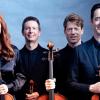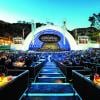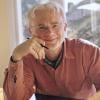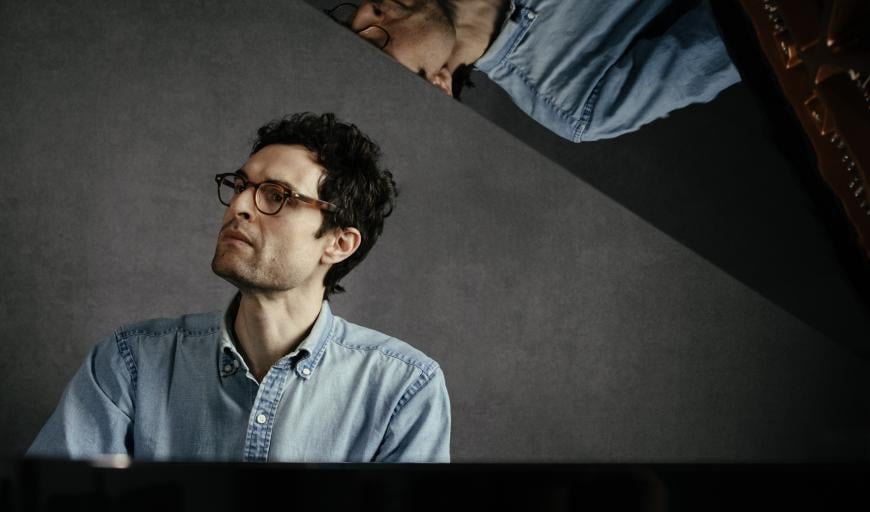
It is not unusual for the Los Angeles Philharmonic to hire virtuoso pianists as guest artists. It is also quite common for the orchestra to commission new works from noted contemporary composers.
But having an artist appear in both roles within the same four-day period is somewhat out of the ordinary.
Such is the good fortune of Timo Andres. He is one of five pianists who together will perform the complete etudes of Philip Glass on March 19 at Walt Disney Concert Hall. Then, March 22–24 on that same stage, John Adams will lead the LA Phil and soloist Aaron Diehl in the world premiere of Andres’s fifth piano concerto, Made of Tunes.
The concerts will spotlight one of the most interesting contemporary composer-performers and his relationship with two masters of American music. Andres, a Palo Alto native who was born in 1985, was strongly influenced by both Adams and Glass.
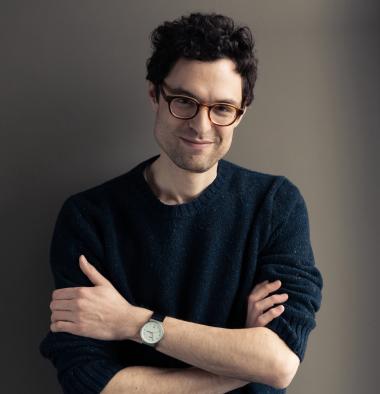
“I came to John’s music before I knew any of Philip’s,” Andres said in an interview from his Brooklyn home. “It was my freshman year of college. I was making a living as an accompanist, and someone hired me to play Road Movies, [Adams’s] violin sonata. Working on it was a revelation.
“It was a totally new type of musical grammar for me, as well as a new rhythmic language. It changed my thinking in a lot of ways. That led to me checking out a lot of other music by John, as well as a lot of other so-called minimalist music, including the music of Steve [Reich] and Philip.
“I had been studying composition at Juilliard pre-college when I was in high school. That was in the late ’90s/early 2000s. Juilliard was still really traditional at that time, so I had a traditional 20th-century romantic musical grammar in my head. That’s the way I was writing at the time. This minimalist influence blew that wide open. It profoundly changed my musical thinking.”
That is not to say you should expect to hear repeated arpeggios in Made of Tunes, any more than in Adams’s own City Noir, the piece on the second half of the weekend’s program. Both composers have incorporated their minimalist roots into a more complex aesthetic over the years.
Andres says his mature style is “the result of a long process of synthesizing all of the different influences I’ve had and continue to have. I was steeped in the classical canon, more so than some of my colleagues. I grew up playing Beethoven and Brahms and Schumann. All that repertoire is deeply ingrained in my brain. That’s less and less common with composers of my age or younger.
“That’s not a value judgment. Composers are coming from more and more different places, which is fantastic. But I think it distinguishes my voice among my peers.”
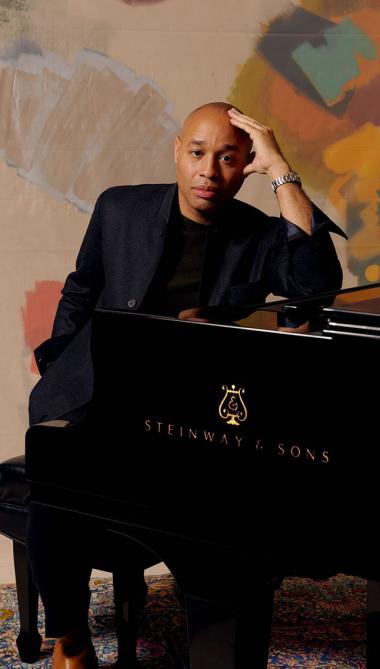
In addition, Andres’s piano concertos are influenced by the strengths and sensibilities of the pianists who premiere them. His third concerto, The Blind Banister, due for a recording release on March 22, was written for Jonathan Biss. The new one was conceived for Diehl, who is acclaimed for his work in both classical and jazz.
Not surprisingly, Diehl asked Andres to leave him some room for improvisation, and there are spots scattered throughout the concerto where the soloist will be free to do just that. “Oddly, the actual cadenza section, which is the fourth section of the second movement, is entirely written out.” Diehl revealed. “So the traditionally improvised section [of a concerto] is through-composed. But it does allow a lot of room for interpretation.”
The title, Made of Tunes, is a reference to a line in Charles Ives’s song “The Things Our Fathers Loved,” which reads, “I think there must be a place in the soul / all made of tunes, of tunes of long ago.” But it’s also a literal description of Andres’s compositional process.
“I challenged myself to start this piece with melodic material — with tunes,” he said. “Usually when I’m composing, the grit in the oyster is something much smaller and more basic, like a little harmony or figuration or a structural idea. Something more abstract and flexible. For me, melody is usually something that comes out of [that] material. You write toward it.
“In this case, all of the material in the piece is derived from preexisting melodies. For the first movement, it’s two hymns — one called ‘Come, Labor On’ and another called ‘Northfield.’ Both have a deep significance for me. One of them I knew and sang as a child; the other is used by my late friend and mentor Ingram Marshall in some of his music. I associate it with him.
“The second movement of the piece is distantly derived from ‘America the Beautiful.’ It came from a previous commission from the pianist Min Kwon, who asked many composers to write small piano pieces based on that melody. I wrote her a three-minute piece called ‘American Coda.’ I always felt it had the potential to be something bigger.”
Bigger indeed: The movement, which concludes the piece, is a set of six variations, each quite substantial. The result is Andres’s longest piano concerto to date, clocking in at around 27 minutes.
Andres the performer will be spotlighted on the Tuesday night concert, in which he and pianists Anton Batagov, Lara Downes, Jenny Lin, and Mari Namekawa will perform all 20 of Glass’s etudes. That evening is sold out, which doesn’t surprise Andres at all.
“Philip is somewhat unique among living composers in that he has found his own audience over the years,” Andres noted. “That was partly by necessity. For so long, he was rejected by the classical or modern-music establishment.
“It also has to do with the directness of his music — the fact it’s often made using relatively simple materials. The level of emotional information is very easy to access. I think there’s a lesson there. As composers, we often make things more complicated than they need to be. We get in our own way.”


